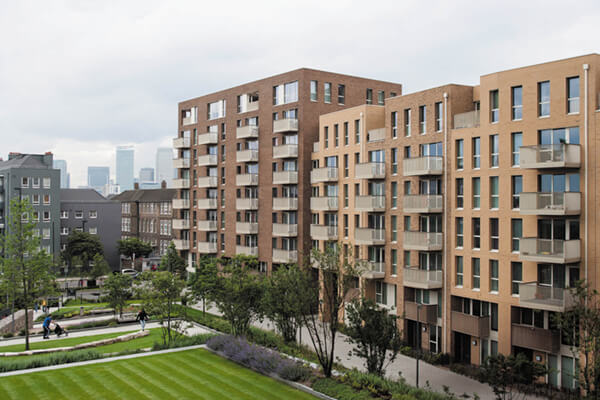Homes: out with the old, in with the new
13 August 2018

If you’re looking to move home any time soon you may be weighing up the pros and cons of buying a new property over an older one. Whilst an older house may capture your heart with its rustic charm, there are many benefits to buying new.
New build homes have many advantages. Everything is brand new and the home is a blank canvas just waiting for you to stamp your mark, with less obvious benefits such as the safety advantages of modern wiring and the improved robustness of foundations. New homes usually come with an NHBC warranty, providing protection to homeowners for 10 years after completion.
A recent guide published by the NHBC Foundation ‘Futurology: the new home in 2050’ looked ahead to see what the new home of the future may look like. But what major changes have we seen in new homes over the past thirty to forty years? NHBC, the UK’s leading warranty and insurance provider for new homes has compiled nine interesting facts detailing how new homes have improved.
Modern layouts
- Thirty years ago homes tended to comprise more rooms, but smaller rooms, than we see today. Homes were likely to have a separate sitting room, dining room and kitchen and now we see more flexible layouts with family-friendly open plan spaces for cooking, eating and relaxing.
Energy Efficiency
- Today’s homeowner can benefit from the cost savings brought about by the greatly improved energy efficiency of new homes. Well-insulated houses built to current regulations will cost approximately half as much to heat as Victorian homes that have uninsulated solid-brick walls, some single glazing and a gas central heating system.
- From the early 1980s central heating has been regarded as a basic requirement, but homeowners are now benefitting from the increased energy efficiency of modern boilers. Most new homes have condensing boilers installed which can reach 90% efficiency. In comparison, an older non-condensing boiler doesn’t usually reach more than 65% efficiency.
- The first LED (light-emitting diode) technology was invented in 1962. This technology has advanced since the 1960s, but LED lighting for homes has only become available over the past couple of years. By installing LED lighting in your home you could cut your energy use by more than 80% versus traditional light bulbs.
- In the 1980s uninsulated cavity walls were commonplace. Now they contain at least 100mm of thermal insulation, improving comfort by reducing unwanted heat loss and minimising draughts.
Modern facilities
- New homes have more bathroom facilities than they did a few decades ago. A downstairs WC is now the norm and master bedrooms often benefit from en-suite bathrooms.
- Modern day toilets are restricted to using a maximum of six litres of water in each flush. That’s a reduction of 1.5 litres since the 1980s, which means over a year, a family of four can save enough water to fill 70 baths.
- A new three-bedroom home has at least 38 electric sockets, mounted at knee height to provide easy access.
Safety
- New homes come with enhanced security features as standard, including robust window and door locks. In 1988 there were 441,000 police recorded domestic burglaries. This fell to 206,000 in 2017 and it is widely accepted that improvements to home security have been an important factor in the reduction in domestic burglary offences.
If you are interested to see what advances we may see over the next 30 years, take a look at NHBC Foundation’s guide Futurology: the new home in 2050 which is available for download at www.nhbcfoundation.org.
